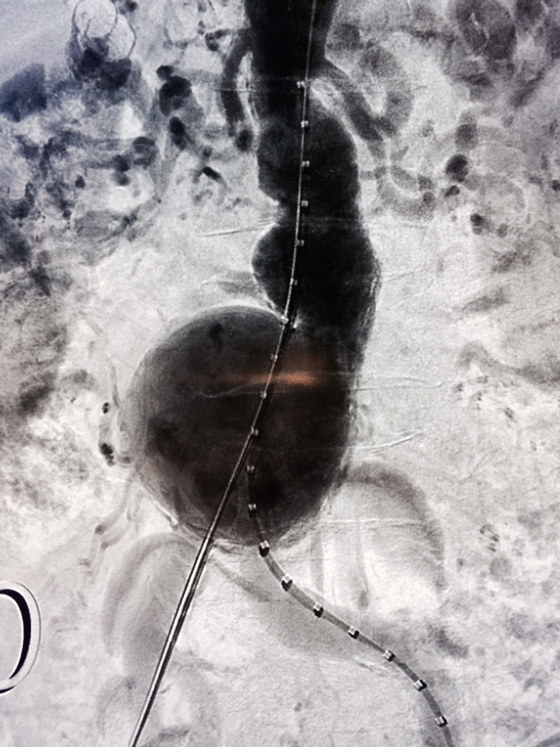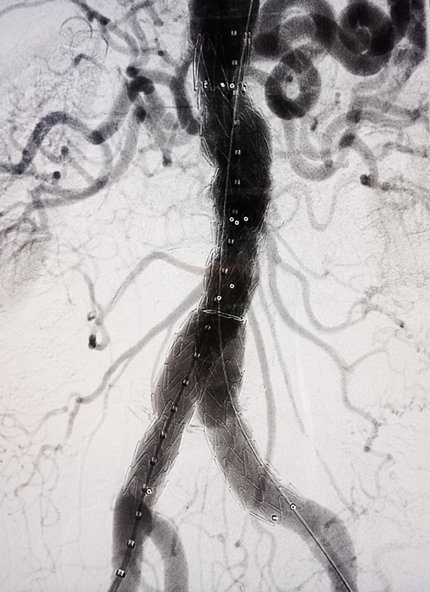
The abdominal aorta is the largest artery in the abdomen and carries oxygen-rich blood away from the heart. An aneurysm develops when the artery is weakened, causing it to swell. The pressure generated by the heart causes the aneurysm to gradually enlarge. If gone untreated, the danger is that it can grow large enough to rupture, resulting in a life-threatening condition. But now, abdominal aortic aneurysms (AAA) can be repaired electively at San Juan Regional Medical Center.
Interventional and Vascular Cardiologist, Dr. Faraz Sandhu, can repair an un-ruptured AAA through a procedure called endovascular aneurysm repair (EVAR) at San Juan Regional Medical Center. In the hospital’s Cardiac Catheterization Labs, Dr. Sandhu feeds a stent through small incisions in the femoral artery, which seals and supports the weakened aorta.
The Ease and Convenience of EVAR Corrects a Silent Danger
“Unlike open surgery, EVAR is a shorter procedure which usually takes under two hours to perform, is associated with lower mortality, and requires less recovery
time,” said Dr. Sandhu. “Patients often go home the day after this procedure, unlike open surgery which may require more than a week’s stay in the hospital.” Patients who receive an EVAR will have an annual surveillance CT scan to confirm stent placement and integrity. An abdominal aortic aneurysm after endovascular aneurysm repair (EVAR).Abdominal aneurysms are often undetected because they present few to no symptoms. Rupture of the aorta can lead to severe hemorrhage and often sudden death. “People usually don’t feel an aneurysm until they rupture,” said Dr. Sandhu. “And mortality rate for a ruptured aneurysm is up to 80 percent.”
Early Detection and Prevention are Key
Because aneurysms are often asymptomatic, screening is especially important. Risk factors for developing aneurysms include smoking, high blood pressure, high cholesterol, a family history, male gender, and age 65 and older. “Individuals with these risk factors should request a referral for screening from the primary care physician,” said Dr. Sandhu. “A physical exam is not a reliable method; an ultrasound is a more accurate test to detect an AAA.” According to Dr. Sandhu, fifty percent of people with ruptured aneurysms die of internal bleeding before they even reach the ER. “This is why early detection and prevention are so critical.”
Dr. Sandhu says that in the past, physicians and surgeons often associated aneurysms with major surgery, which may not be necessary. “Instead of sending their patients out of town for aneurysm repair, physicians can now refer their patients locally for less-invasive EVAR,” said Dr. Sandhu. “If the patient is felt to be a candidate for intervention, I review the imaging studies and determine the appropriate approach for aneurysm repair. The majority of patients that I see are good candidates for EVAR.”
| |
Before
|
|
|
|
After
|
|
| |
 |
|
|
|
 |
|
| |
.
|
|
|
|
|
|
Click here to learn more about services offered at San Juan Regional Heart Center.